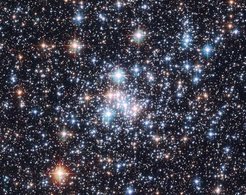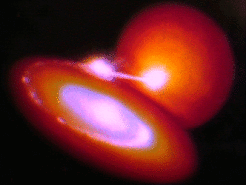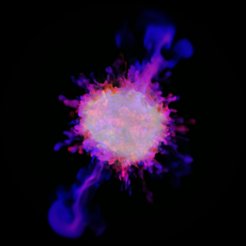Subgalactic Astrophysics
Stars, in their various evolutionary stages, from birth to ultra-compact remnants after an energetic death, constitute a very wide field in astrophysics. Their understanding is crucial for most other fields of astrophysical research, as stars are the major source of information from nearby and faraway parts of the universe. The physics determining their structure, evolution, and final fate includes all fields of physics: thermodynamic, fluid dynamics, nuclear and atomic physics, particle physics, general relativity, and more have to be considered. At MPA we work on several of these aspects theoretically, treating the astrophysical problems almost exclusively with numerical programs and elaborate computational methods. The complexity of many of these problems require the use of supercomputers at the technological forefront. Currently, research on stellar objects at MPA can be divided roughly into stellar evolution of single stars, binary systems and accretion disks, supernova explosions, compact remnants.
Topics of Subgalactic Astrophysics at MPA Garching include
Computational Astrophysics [more]
Structure and Evolution of Single Stars
Binary Stars and Accretion Disks
Core-collapse supernovae [more]
Physics and Neutrino Physics Around Hot Neutron Stars [more]

The basis of all stellar physics is the hydrostatic evolution of single stars. We investigate this with a highly developed numerical code (termed GARSTEC, the Garching Stellar Evolution Code), which was created in the 60s of the last century at our institute and since then has been developed and updated continously. The code can handle stars of all masses and initial chemical composition, but is also well suited for highly accurate computations of the solar interior and for purposes of asteroseismology. The main emphasis lies on the structure and evolution of low and intermediate mass stars. The former are found in the galactic halo and in globular clusters and serve as witnesses of the galacto-chemical evolution, the latter are an important nucleosynthesis site.
While this code is a traditional hydrostatic 1-dimensional one, we are also investigating crucial aspects of stellar structure, which require a dynamical approach, with 2- and 3-dimensional hydro-codes. Such problems include core convection in massive and developed stars, envelope convection in the Sun and red giants, nuclear flashes, and rotation in stars. The aim is to extract fundamental properties of such effects and to include them in a realistic way in the 1-d code, which is still the only way to follow a star through its complete life [more].

Structure and evolution of stars show additional features in double stars. If two stars are so close that they influence each other through gravitational forces, radiation or matter overflow the physical processes caused by this interactions result in several interesting phenomena found in the observations. This evolution finally leads to binaries with a compact star, either a white dwarf as in cataclysmic variables and AM Herculis stars and novae, or a neutron star or a black hole as in the transient X-ray-binaries. The 'living' catalogue by Ritter and Kolb lists data for cataclysmic variables, low-mass X-ray binaries and related objects, more than 2000 objects with known or suspected orbital periods.
Important for the short-time and long-time evolution of the binaries are the accretion disks formed around the compact star due to the high angular momentum of matter overflowing from the close companion star. The thermal-viscous instability in the accretion disk causes cyclic variations of luminosity, especially the outbursts in cataclysmic variables and certain X-ray transients. Due to the fact that the physics of accretion processes is the same for stars and supermassive black holes the research of structure, instabilities and evolution of accretion disks is also applied to Active galactic nuclei, using the cataclysmic variables as a laboratory [more].
Observation-driven modelling of stellar explosions

The end of the stellar life cycle is often marked by cataclysmic events: powerful explosions that disrupt the dying star and eject all or most of its material. Due to the vast energy release accompanying these explosions, they can temporarily become as luminous as their host galaxies allowing us to observe them out to large distances.
We aim at understanding the nature of these transient objects, approaching the problem from two sides: on the one hand, we characterise the observed properties and diversity of the objects by applying advanced statistical tools, thus deriving constraints for theoretical explosion models. On the other hand, we take a forward modelling approach, starting from explosion models and simulating the observation display using radiative transfer or radiation hydrodynamical calculations.
Currently our main focus lies on thermonuclear (Type Ia) supernovae and hydrogen-rich core-collapse supernovae (Type IIP). Both classes are used as cosmological distance indicators, probing the expansion history of the Universe. Our investigations help in reducing the systematic uncertainties inherent to such measurements.


